
 |
|
#1
|
||||
|
||||
|
My one and only dry sub dive took place off Georgetown, Grand Cayman a while back. This was before Ivan trashed the island and destroyed the deep submergence vessel sad to say. Did the dive with http://www.atlantisadventures.com/ca...activities.cfm . They still run their sub "bus" down to about 112 ft. along the rampart of the drop off. Still worth a dive in my opinion. I can recall when they drove these large subs on flatbeds down I-95 one at a time to be shipped to destinations in the Caribbean. Strange sight!
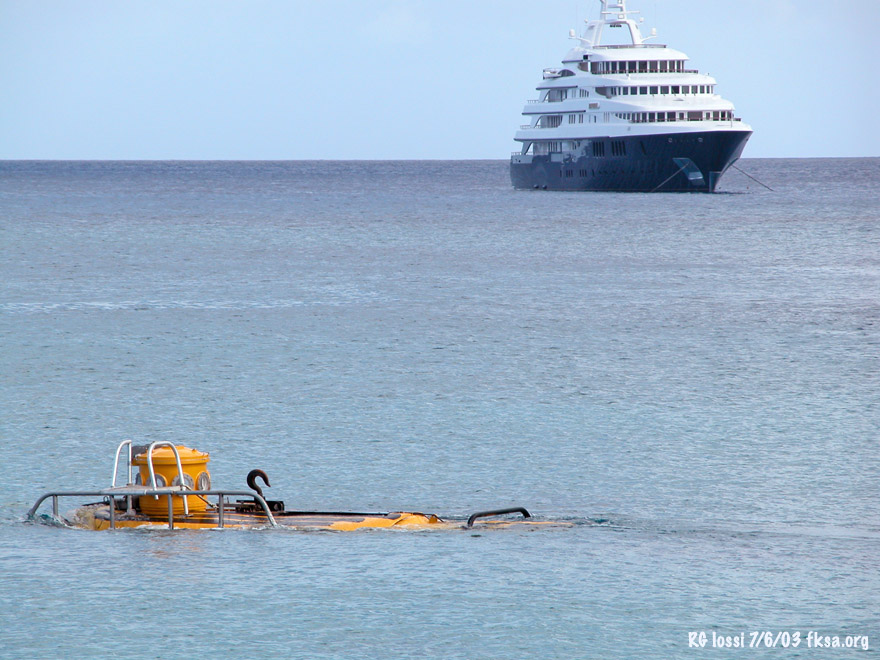 The three man dry sub awaits 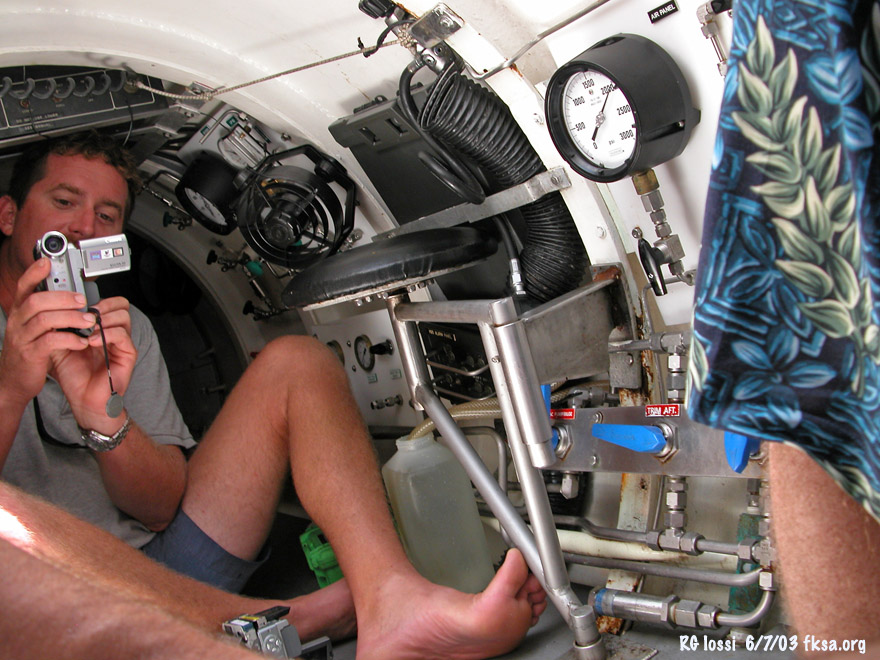 Inside the sub, a bit tight but serviceable. Beats trying to free dive to 1200 ft.! A section showing the drop off including the wreck of the Kirk Pride at 800 ft. of water. From: National Geographic, November 1988 From the 2004 original page of the now defunct Atlantis Submarines website about this dry sub dive: "TOUR DESCRIPTION: Imagine exploring the mysteries of the ocean 1000 feet beneath the surface, on board a sophisticated deep diving Research Submarine. Does this sound like an experience available only to a select few scientists, or teams from the National Geographic Society? That was certainly true in the past, but now you too can join the ranks of these explorers! Since 1985 the public has been able to experience the fascinating undersea world of the spectacular Cayman Wall to depths of 1000 feet, and we are still the only place in the world to offer such a unique underwater adventure to the general public. Absolutely no diving experience is necessary. Our excursions have been featured in numerous magazines and TV programs including National Geographic, Skin Diver, CNN Travel Guide, ABC Wide World of Sports, and Good Morning America. We operate two Deep Explorer submarines. Each vessel carries just two passengers and one highly skilled pilot. Guests sit side-by-side in front of a three foot diameter hemispherical window, providing an excellent view of this rarely seen world. As the submarine descends, powerful lights illuminate the brilliant colors of the region known as the "sponge belt" from 200-450 feet. This area is characterized by literally hundreds of species of sponges proliferating on the sheer vertical wall. These sponges come in bizarre shapes, sizes and colors: 20-foot-long orange rope sponges, monstrous barrel sponges, multi-branched tube sponges, and marble hard sclerosponge are just a few examples. Below 500 feet, the water temperature begins to decrease, creating distinct zones of life, each with a unique animal community. Beyond 650 feet, we encounter enormous limestone blocks termed "haystacks," some standing as much as 150 feet tall. Here we find many of the unusual animals and delicate corals of the deep, such as stalked crinoids, porcelain corals, black basket starfish, and large deep sea gorgonians. Beyond 800 feet, the bottom descends in a series of shelves and escarpments. The atmosphere in the submarine remains at surface pressure; so, unlike an airplane or swimming underwater, you will feel no pressure or sensation in the ears. We provide a very personalized trip and a fantastic photo opportunity for both still and video photographers. We recommend at least 1000 ASA film. A pilot operated video service is available for an additional charge. An advantage to this service is that passengers may enjoy the dive without holding a camera or observing the entire adventure through a viewfinder. The 1000 foot tour is about 90 minutes from "shore to shore," including 15 inutes for the short boat ride to and from the dive site. Check-in is 30 minutes prior to dive time." 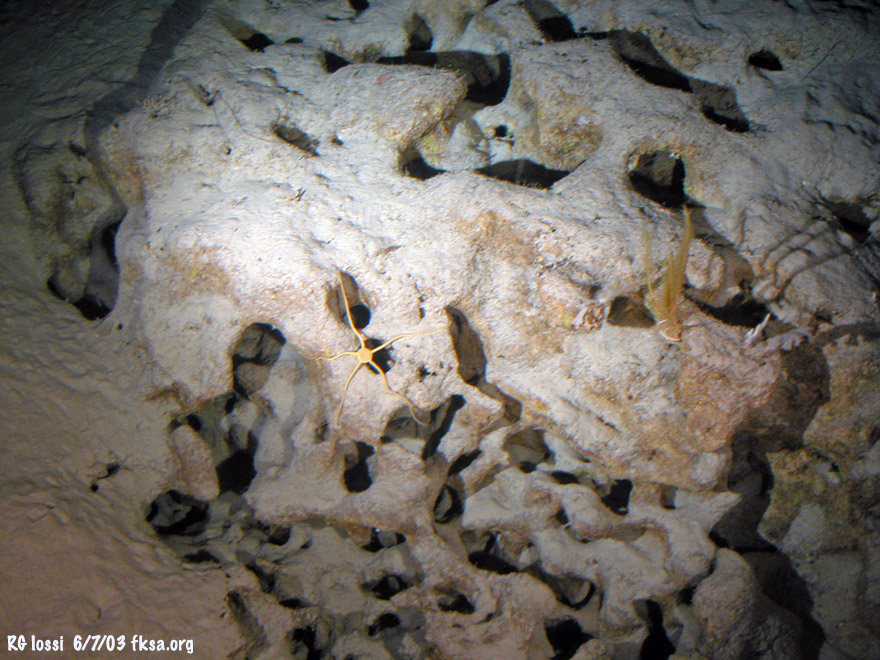 There is a crinoid there, the deep in large measure seems to belong to invertebrates. These guys developed when seas were cooler, darker. When glaciers receded, the seas deepened and cleared up, some of these guys ranged deeper or moved into and under rocks or shifted to night time operations. 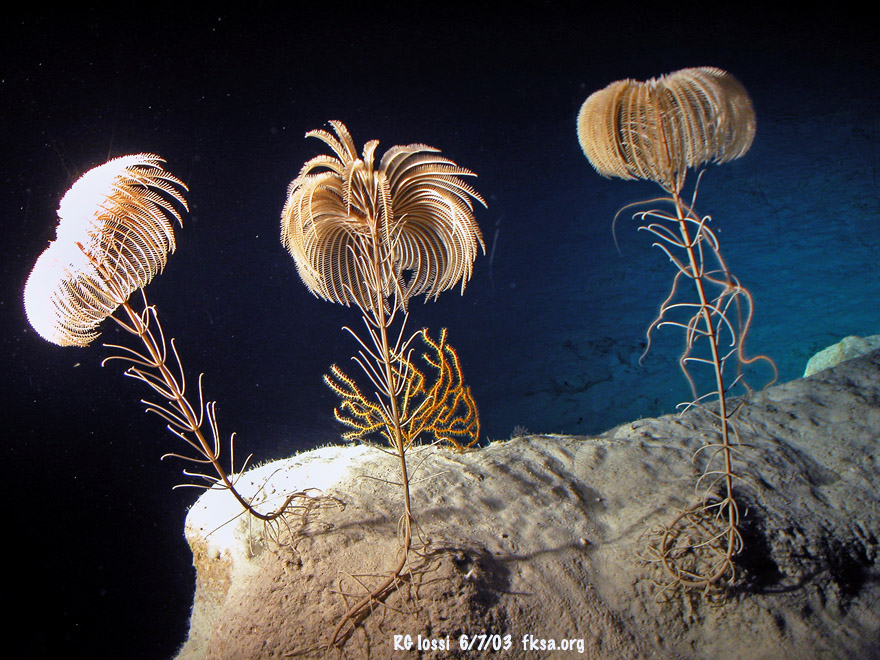 A trio of Sea Lillies, Feather Stars or Endoxocrinus parrae pose for the camera at about 1000 ft. These guys are crinoids that WALK! Checkout the multiple legs made for uh walking. More at: http://www.livescience.com/animals/051017_sea_lily.html and http://tinyurl.com/sealillie  Getting to the head of the matter or the oxygen and food exchange surfaces. Think they might use it for a submerged version of kitesurfing when no one is looking. Never know?  Another reason the Lillies occur so deeply is to avoid predation. Some fish and decapod crustacea favor them. I just came across some Notes on the walking crinoids in the Bulletin of Marine Science, including: "BULLETINOFMARINESCIENCE4,2(3): 480-487, 1988 RELOCATION MOVEMENT IN A STALKED CRINOID (ECHINODERMATA) Charles G, Messing, M, Christine RoseSmyth, Stuart R, Mailer and John E. Miller Of about 80 species I of extant stalked crinoids, or sea lilies, more than half attach permanently to hard substrates by cementation of a terminal stalk plate or to sediments by branching rootlets. The remainder compose the family Isocrinidae and anchor chiefly to hard substrates via segmented prehensile cirri that arise in whorls of five at intervals along the stalk. Several authors have inferred that cirral attachment is temporary; swimming with arms or cirri and passive drifting along the bottom have been suggested as means of relocation after detachment (Car- penter, 1884; Kirk, 1911; Conan et al., 1981). Roux (1976) suggested that increased sedimentation rates on a canyon-mouth population of Diplocrinus (Annacrinus) wyvillethomsoni (Jeffreys) could cause individuals to relocate. However, most isocrinids appear to favor relatively stable environmental conditions (indicated by sediment shadows, hydrographic records, and growth and orientation patterns of co-occurring sessile invertebrates). Significant mobility has not been demon- strated up to now. Although isolated observations ofthe isocrinid Endoxocrinus parrae (Gervais), indicate that it can crawl with its arms, in situ observations from submersibles during the last 15 years (Macurda and Meyer, 1974; 1976; Neumann et al., 1977; Messing, 1985) have not included extended time-series data for individual spec- imens essential for understanding the details of detachment and locomotion. The establishment by Research Submersibles, Ltd. of daily, shore-based submersible dives to 250 m off Discovery Bay, Jamaica, and, more recently, Georgetown, Grand Cayman Island, has allowed us to make repeated observations of individ- uals of the isocrinid, Cenocrinus asterius (Linnaeus), over extended periods and document their movement, reported herein." Continued at: http://nsuworks.nova.edu/cgi/viewcon...cc_facarticles 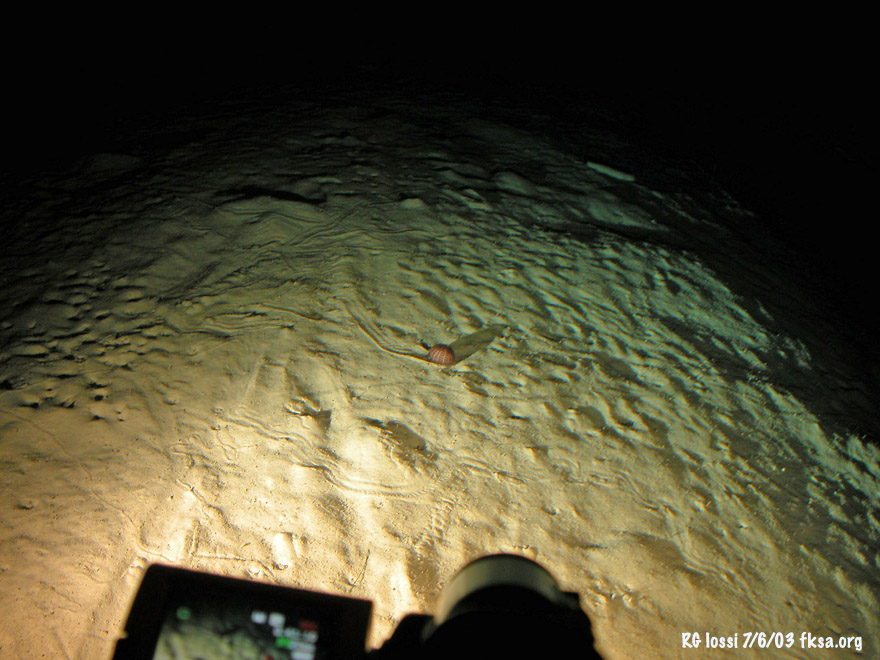 A sea biscuit draws a line in the sand  Sliding up the wall and back to the light. We had remarkable visibility below the euphotic zone (where it is perpetually black), several hundred feet. If you have a chance to do a deep submergence dive sometime, you might give it a whirl.
__________________
FKA, Inc. transcribed by: Rick Iossi Last edited by ricki; 02-26-2015 at 10:42 PM. |
| Thread Tools | |
| Display Modes | |
|
|